Posts Tagged: Anthidium manicatum
European Wool Carder Bees Are on the Move
Seen any European wool carder bees lately? European wool carder bees (so named because the female collects or cards plant hairs for their nests) are...
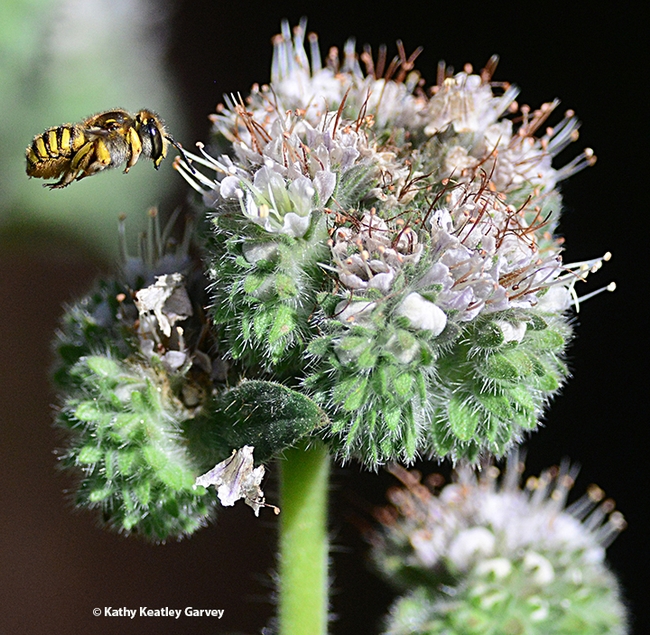
A European wool carder bee in flight. (Photo by Kathy Keatley Garvey)
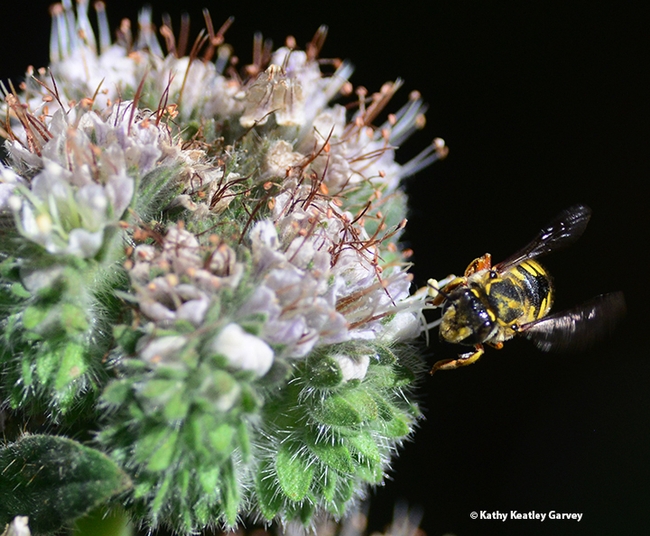
European wool carder bees are difficult to photograph when they're zipping around. (Photo by Kathy Keatley Garvey)
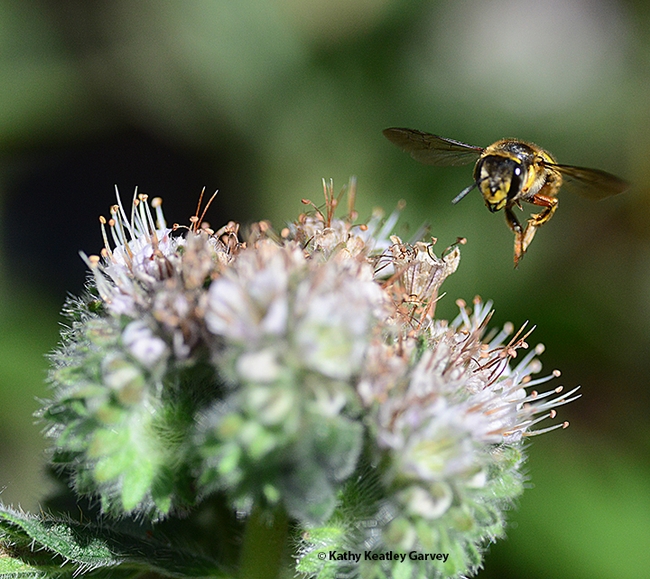
Make way! This European wool carder lets everyone know who's boss. (Photo by Kathy Keatley Garvey)
The Wonderful World of Insects
Learning more about insects ought to be one of your New Year's resolutions. Here's a good place to start: read the UC...
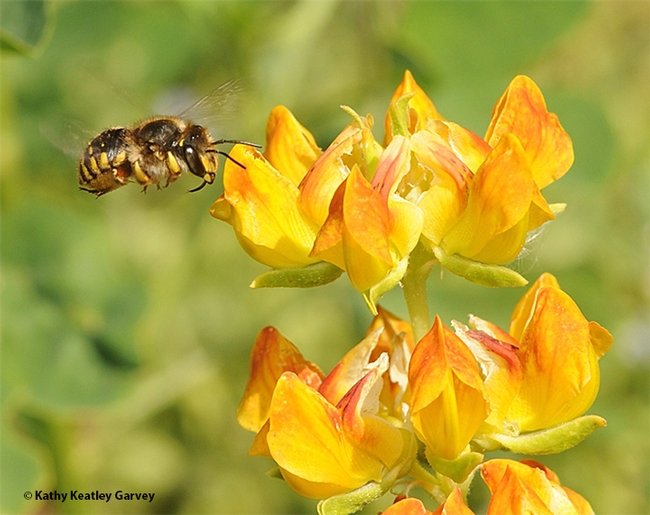
A European wool carder bee, Anthidium manicatum, heads for a snapdragon. (Photo by Kathy Keatley Garvey)
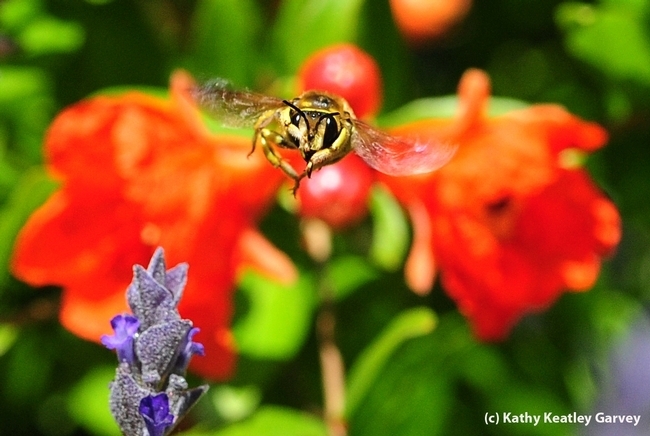
A male European wool carder in flight over a pomegranate blossom. (Photo by Kathy Keatley Garvey)
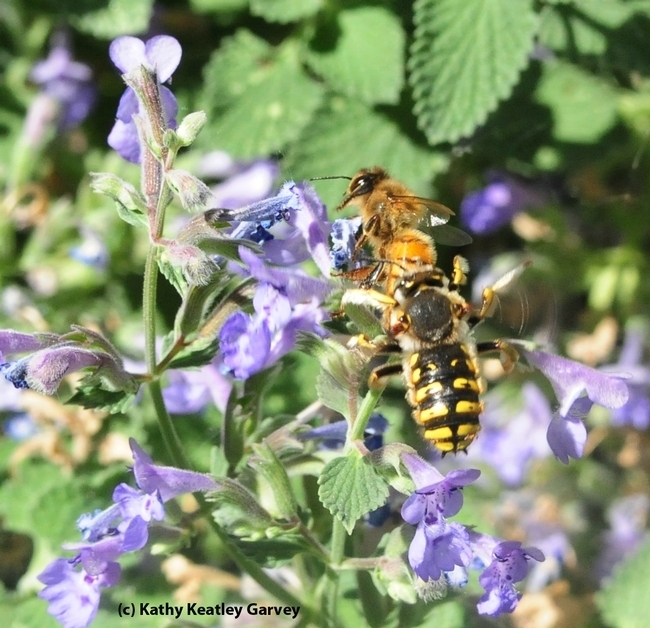
Male European wool carder bees are highly territorial. This one is targeting a honey bee on a catmint blossom. (Photo by Kathy Keatley Garvey)
Love Is in the Air...er...in the Snapdragons
Love is in the air. Or, more specifically, in the snapdragons. If you maintain a pollinator garden, you've probably seen female European wool...
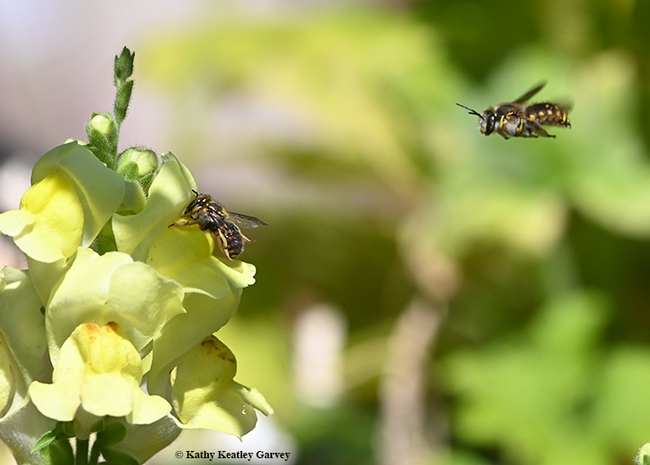
First in series: A male European wool carder bee (Anthidium manicatum) targets a female foraging on a snapdragon. (Photo by Kathy Keatley Garvey)
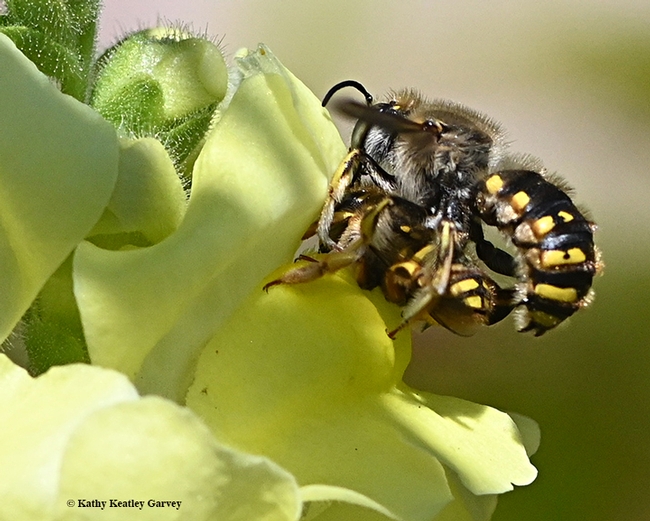
Second in series: Male European wool carder bee (Anthidium manicatum) connects. (Photo by Kathy Keatley Garvey)
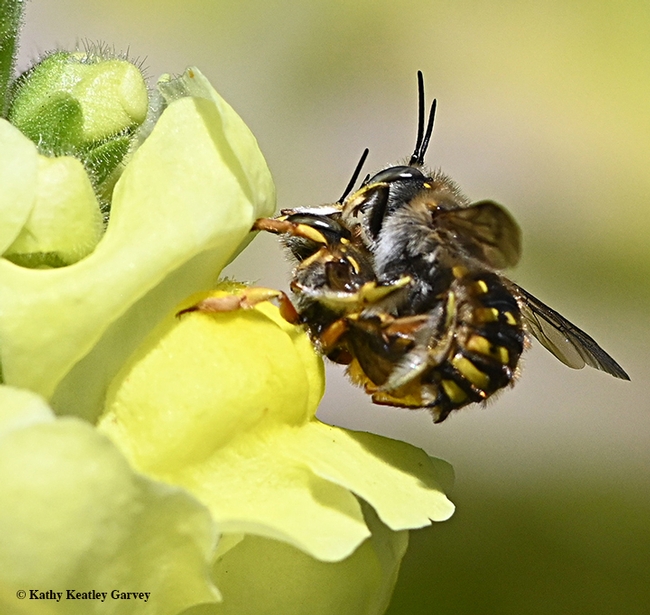
Third in series: European wool carder bees go about populating the species. (Photo by Kathy Keatley Garvey)
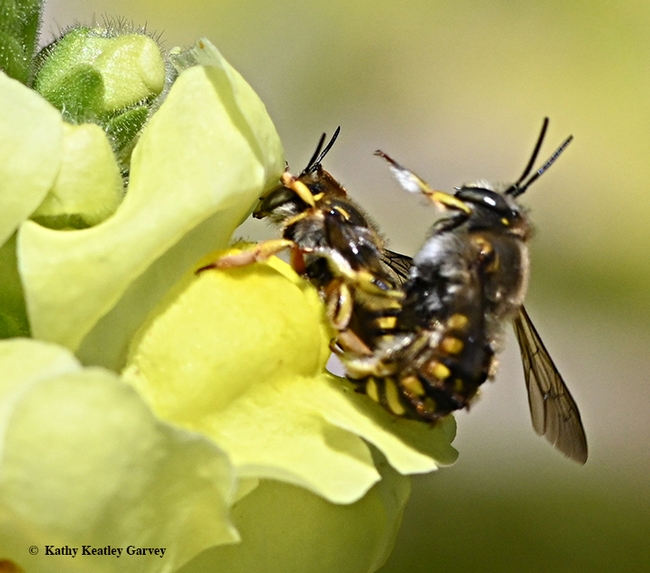
Fourth in series: Male European wool carder bee is almost finished. (Photo by Kathy Keatley Garvey)
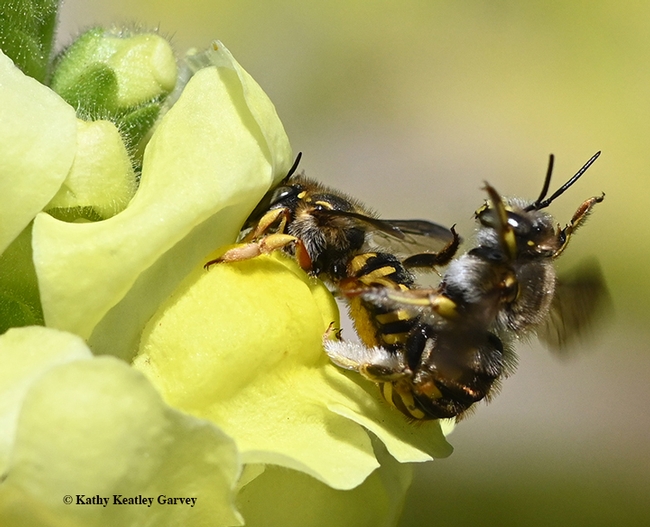
Fifth in series: Soon, the population of European wool carder bees will increase in this Vacaville pollinator garden. (Photo by Kathy Keatley Garvey)
European Carder Bees Do Like Snapdragons!
What a show! Last weekend we spotted female European wool carder bees (so named because they collect or card plant hairs for their nests) buzzing in...
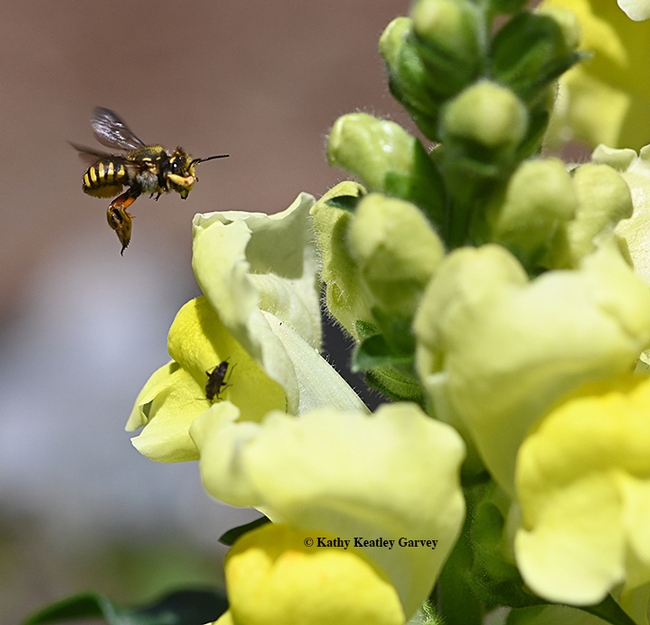
A male European wool carder bee patrolling snapdragons in Vacaville, Calif. (Photo by Kathy Keatley Garvey)
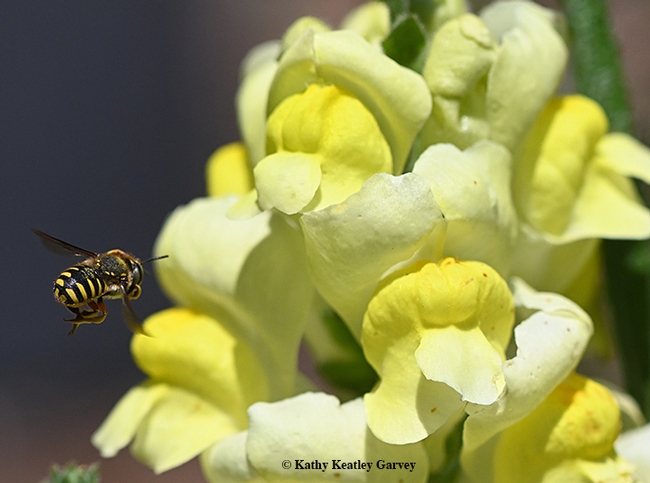
The European wool carder bee is about the size of a honey bee. (Photo by Kathy Keatley Garvey)
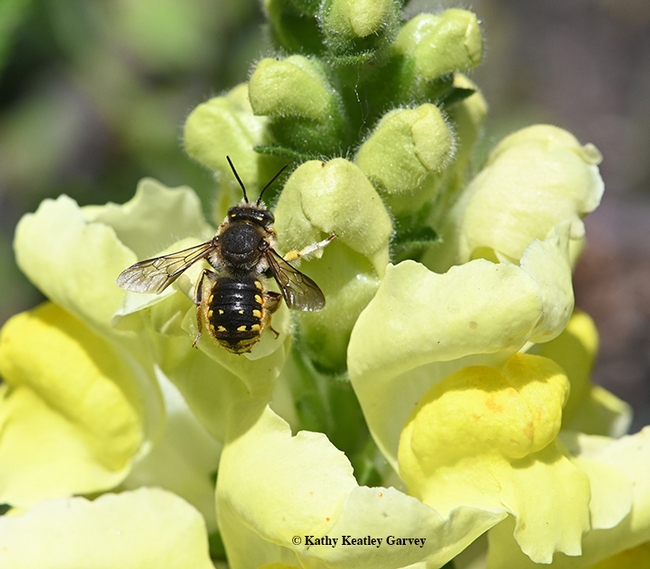
Dorsal view of the European wool carder bee as it rests on a snapdragon. (Photo by Kathy Keatley Garvey)
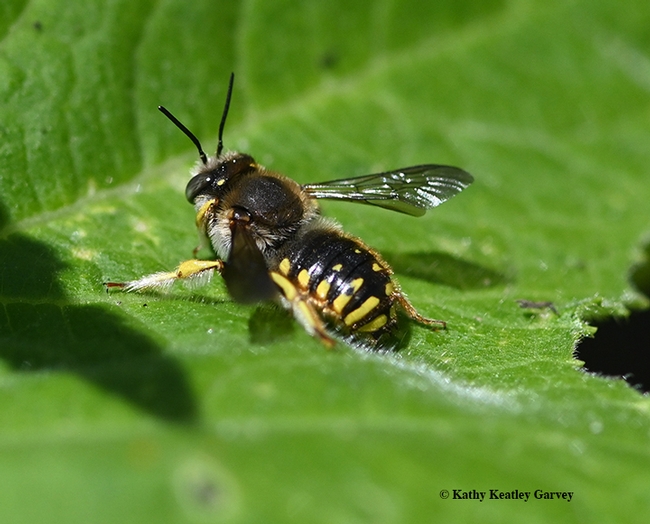
All that patrolling makes a fellow tired. A male European wool carder bee rests on a leaf. (Photo by Kathy Keatley Garvey)
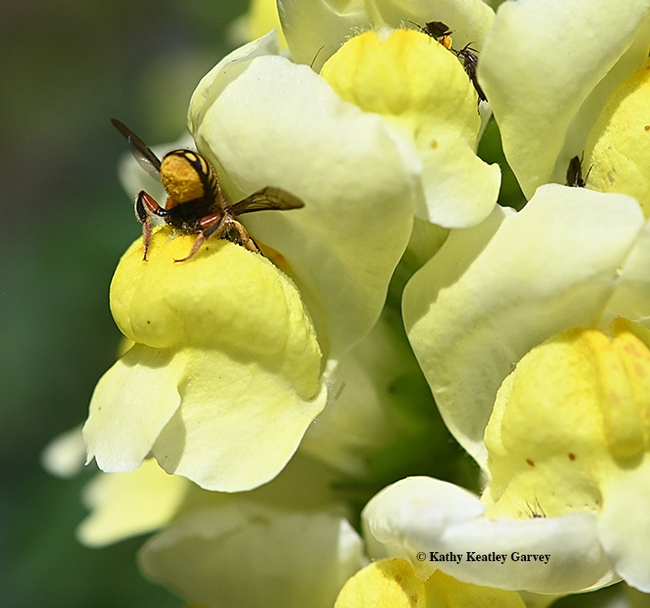
Bottoms up! A female wool carder bee foraging in a snapdragon. (Photo by Kathy Keatley Garvey)
Bee-Hold, The Eye of the Bee-Holder
Bee-hold, the eye of a bee-holder. When you have a "Bee Crossing" sign in your pollinator garden, odds are that bees will cross right in front of...

"Bee Crossing" signs are favorites in pollinator gardens, not for the bees, but for the humans. (Photo by Kathy Keatley Garvey)
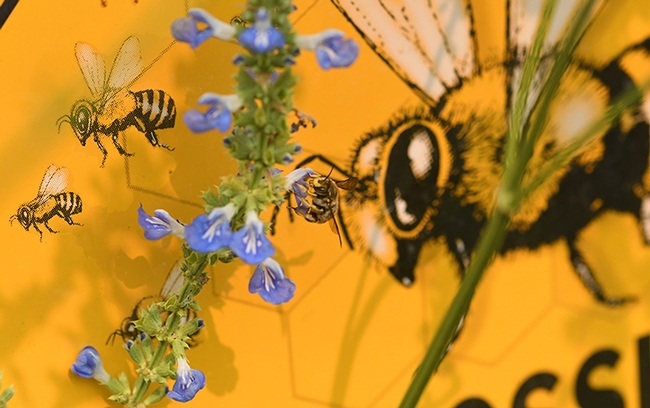
Sign of the times: A European wool carder bees (Anthidium manicatum) is surrounded by honey bees on the "Bee Crossing" sign. (Photo by Kathy Keatley Garvey)
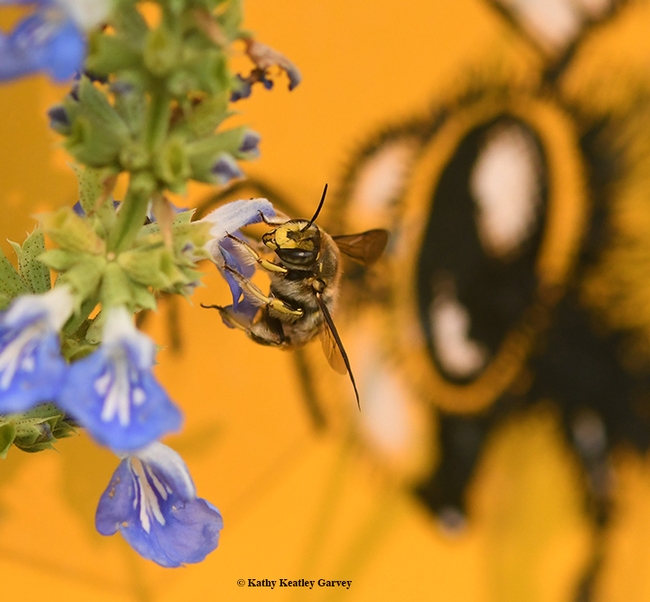
Close-up of European wool carder bee nectaring on a blue spike salvia. The eye of a honey bee adds to this photo. (Photo by Kathy Keatley Garvey)

